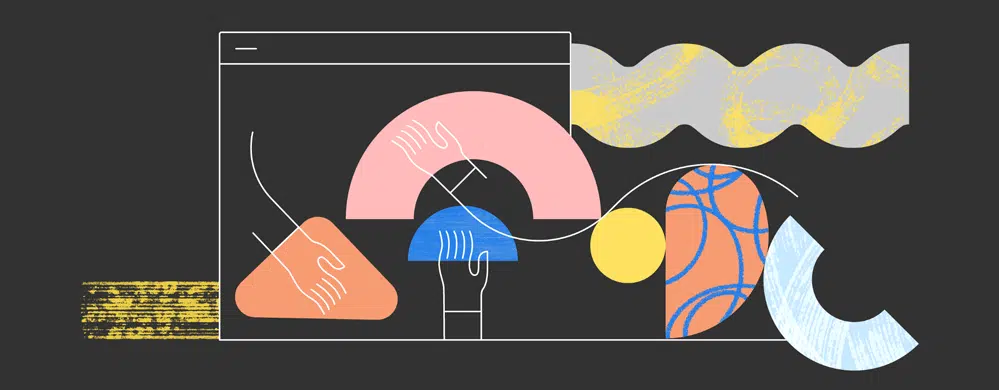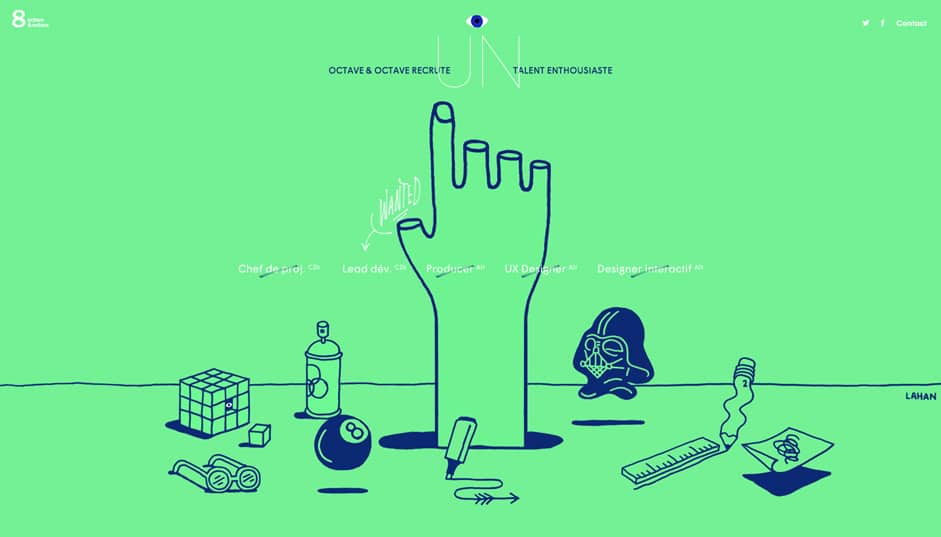Illustrations have found a way to take center stage in corporate web design. There was a time when photography was considered to be more effective and somehow more controllable when designing web pages. Illustrations have moved away from being purely decorative and have found a way to stand next to a compelling photo-realistic imagery.
There was a time when explicit graphic communications ruled corporate advertising and digital marketing. The gradual shift from highly precise communicative imagery to a more nuanced and ambiguous form conveyed through illustrations has opened up new possibilities in the world of visual arts. Here are a few examples of how illustrations are currently being used in corporate Web design. Brands like Dropbox, Adobe, Shopify and other leading brands have adopted this medium to communicate their story. As Illustrations emerge to be a part of the user experience, brands are looking to evolve their styles to reach their audiences in a way to build meaningful connections.
Dropbox Illustrations

By using hand-rendered illustrations, Dropbox was able to create a unique voice over time that helped express their brand to its user. With a visual identity in place, Dropbox continues to use their illustrations for product marketing, comms, and advertising, breathing life and meaning that their product and inspiring millions of users on their way.
Adobe Illustrations

Adobe develops a unique and adaptable visual vocabulary with exploration and pushing the style away from the original source material. While we continue to build products for a diverse array of human beings, the illustration styles have somewhat remained generic in its form. To help set themselves apart, Adobe moves away from the human form and creates an abstract visual vocabulary to capture the imagination of a wide array of audience. Here is how they do it: focusing on human form, texture, color, shape and restraining their explorations to these four tenants adobe develops an abstraction which is later assembled with the elements I mentioned above. This way of creating a visual abstraction helps them create a systematic language that works across multiple platforms and products.
Shopify Illustrations

Shopify attempts to create a consistent style of illustrations by setting clear guidelines for how their spot, character, icons are designed. By focusing on qualities that exemplify the brand, the illustrators at Shopify are able to create a unique style that communicates complex ideas, values, and principles of the brand. To visually articulate this vision, they scour the internet to find things/metaphors they like and capture the traits that reflect the overall vision of the project. This is followed by more exploration and documentation. Documenting their findings and creating a visual library helps them stay consistent and in alignment with the themes and values of the company. As the styles continue to evolve, designers are able to create a cohesive, memorable and distinct experience for their users.
What these brands have in common is the fact that they chose to represent the product and their story using illustrations. They were able to identify the needs of the user and question the intangibles of their experience. By constant exploration, evaluation and interactions, they were able to identify the user’s needs and tell their story.
It’s useful to be able to draw and create artwork as a graphic designer.
As an illustrator, you are able to understand color, shapes, lines and other design elements from a different perspective and this understanding of visual imagery is crucial when you want to communicate a message in a more nuanced and intuitive way.
Starting an illustration side project can be a great way to hone your skill set. A 60-day vector project or setting an intention to draw every day will help you get into the habit of making. Here are 6 ideas on how best to hone your skill set as an illustrator.
1. Start doodling! Start by drawing things that you see every day. Start small, it can be as simple as doodling a coffee cup on your table. Make it a habit to carry a sketchbook or simply learn how to doodle on your phone. Be spontaneous, creative and wild. You don’t need to be an expert to create something beautiful. Creativity is a skill, the more you use it the more you have it. Creating a series of sketches this way, over the course of a few days, weeks or months will help you understand your creative process and this, in turn, will help communicate your idea more visually.
2. Explore color – Look for harmonies in color that you can lean into for your illustration work. Study their pleasing and contrasting qualities. Understanding what color schemes work best for your illustration is key. While it might make sense to use the analogous color scheme for spot illustrations, this may not work for bigger illustrations. Split complementary schemes and triads are capable of creating a more dynamic and visual interest by utilizing the whole spectrum of the color and are preferred choice for larger illustrations. By learning what color schemes work best for your project, you are able to make more informed choices in your artwork.
3. Explore styles- By exploring various illustration styles, learning about them and developing their own visual style in the process, designers and illustrators are able to set themselves apart. How do you find the right style that works for you? It is not an easy process. A lot of attributes have to align. It’s almost like finding your one true love. You have to find the style that fits your aesthetic. Exploring this feeling is essential when it comes to illustration. It has to feel right. It has to be visceral. Developing an illustration style is important when you want to add personality to your design.
Whether you are starting a project, brainstorming or designing, it helps to share your ideas with a community of other creatives. There are a variety of online resources to help you showcase your work. A little encouragement and a virtual pat on the back goes a long way.

